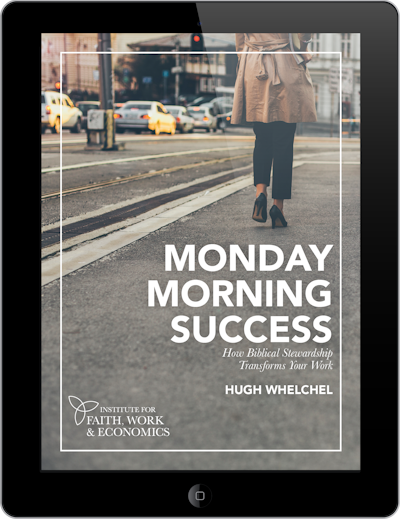On the Feb. 13, 2015, episode of ABC-TV’s “Shark Tank,” my friend, Liz Bohannon, and her husband, Ben, presented their Ugandan-based footwear company—Sseko Designs—to the famous board of billionaire investors.
The pitch started well, as Liz built consensus by saying that they “believe passionately that business has a role in making the world a better place,” to which the Sharks responded, “I love it!”
But ultimately, the Sharks declined to invest, arguing that the best model for philanthropy is to be hyper focused on profits above all else, so that you can get rich and then give back, and not “bake in social impact from day one,” as Sseko has done.
As the former COO of two Fortune 500 and a Fortune 1000 companies and now founder of 4word, the only global nonprofit organization dedicated to connecting, leading and supporting Christian women in the workplace to achieve their potential, I often get asked which model is the better one for philanthropy.
The answer to the question, to me, is simple. Both models can be effective, but long-term success in either requires the same three ingredients: hard work, organizational flexibility and personal responsibility.
For example, I met a dear friend in Dallas, Brittany Merrill Underwood, through the Laura Bush Women’s Initiative. Brittany was so moved by a chance encounter with a Ugandan woman caring for 24 children in her home that she moved to Uganda after graduating college to build an orphanage to give a home to abandoned children.
While she was successful, she realized through the process that building an orphanage proved to be a high-cost, limited-return endeavor. Without diverting from her original mission, she radically redirected her multiyear, not-for-profit organization from a bricks-and-mortar construction strategy toward a strategy of training, employing and empowering local women.
What she had discovered was that by investing in women over buildings, her organization could have a far broader impact and enable women and mothers to care for thousands more children than her orphanage could hold.
The result is Akola—which means “to work”—a not-for-profit jewelry enterprise that produces goods that can be found anywhere from her storefront in Dallas to the glass case in Neiman Marcus. And Akola’s reach has spanned from national to international, employing women abroad in Uganda and at home in Dallas with the same original mission in mind—taking care of children who could not care for themselves.
Stories like Liz’s and Brittany’s are unique, but they are not alone in founding social impact-focused business models. Many are familiar with TOMS shoes, which donates a shoe for every shoe purchased, or Whole Foods, which is the first certified organic grocer in the United States.
As before, these examples, whether socially focused, for-profit or other, share the same three ingredients for success, but the major difference—and this is the key—is that the degree of organizational focus on a social cause is directly proportional to the personal investment by the organization’s leadership in the cause.
In my own experience, I have worked in various corporate models on social issues, from the board room to the basement. I worked for years as a woman in a male-dominated industry. At times, I took my lumps, and over time, I decided that I wanted to make a change to lead and support people in situations similar to mine.
As I grew within the Trammell Crow Company, I started a corporate diversity initiative that has, I am proud to say, outlived my tenure and continues today. I loved my job, and as a COO, I was passionate about leading and building teams.
After several years, however, I decided—like Brittany—that my passion and my talents were necessarily limited if I stayed inside a single corporation, both because of the limited impact of our work and the level of commitment my leadership shared to the cause I care so much about. So, after much thought and prayer, I decided to start 4wordwomen.org to support the 71 percent of women with children under the age of 18 who work outside the home.
I never imagined my career would lead me from the Wall Street earnings calls to working from my home office, but I am grateful that it did. I have for a long time championed and supported the same cause that 4word supports successfully.
Now, as I meet people who ask me which model of philanthropy is correct, I tell them that there are several that work with the right mix of dedication, flexibility and personal responsibility. More importantly, I challenge them to choose their cause and to fight for it, so that whether their path follows Liz’s or Brittany’s or mine, they can leverage their workplace for the good of others.
This article originally appeared in “Faith at Work: Economic Flourishing, Freedom to Create and Innovate,” a special report released by IFWE and the Washington Times. Reprinted with permission.
